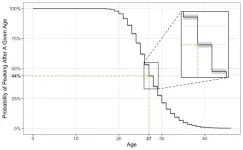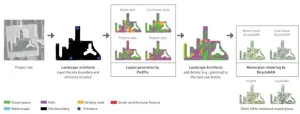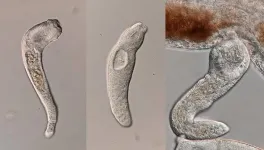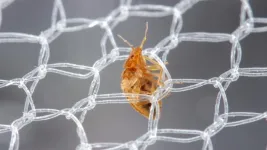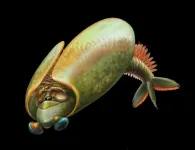The study, Forever Pesticides: A Growing Source of PFAS Contamination in the Environment, is the first-ever comprehensive review of the many ways PFAS are introduced into U.S. pesticide products. Pesticides containing PFAS are used throughout the country on staple foods such as corn, wheat, kale, spinach, apples and strawberries. They are widely used in people’s homes in flea treatments for pets and insect-killing sprays.
Researchers at the Center for Biological Diversity, Environmental Working Group and Public Employees for Environmental Responsibility compiled data on sources of PFAS in pesticide products. Those sources range from specific ingredients intentionally added to pesticides to contamination via leaching from fluorinated storage containers.
The study’s major findings include:
Troubling trend: 14% of all U.S. pesticide active ingredients are PFAS, including nearly one-third of active ingredients approved in the past 10 years. The worst of the worst: PFOA and PFOS, thought to be among the most toxic PFAS chemicals, have been found in some pesticide products, likely from the leaching of fluorinated containers and other unknown sources. Persistent water pollutants: PFAS ingredients in pesticide products have been found in streams and rivers throughout the country. Complex mixtures: Pesticides can accumulate PFAS from multiple sources, leading to mixtures of different PFAS chemicals in containers. Oversight deficiencies: The current U.S. pesticide regulatory framework is not equipped to adequately identify and assess the risks from PFAS in pesticides.
“This is truly frightening news, because pesticides are some of the most widely dispersed pollutants in the world,” said Nathan Donley, environmental health science director at the Center for Biological Diversity. “Lacing pesticides with forever chemicals is likely burdening the next generation with more chronic diseases and impossible cleanup responsibilities. The EPA needs to get a grasp on this fast-emerging threat right away.”
“Toxic PFAS have no place in our food, water or homes, posing a serious threat to our health and environment,” said David Andrews, Ph.D., a senior scientist at the Environmental Working Group. “The increasing use of PFAS pesticides will lead to increasing levels of PFAS in the environment. Their presence not only endangers agricultural workers and communities but also jeopardizes downstream water sources, where pesticide runoff can contaminate drinking supplies. From home gardens to pet care, the use of these pesticide products further illustrates why we must end all non-essential uses of these persistent ‘forever chemicals.’ ”
“I can think of no better way to poison people and the environment than to spray PFAS-laden pesticides on our crops and in our homes,” said PEER Science Policy Director Kyla Bennett. “The blame for this contamination crisis lies squarely on EPA’s shoulders.”
PFAS are intentionally being added to pesticides in part to increase the stability of pesticide ingredients and improve pesticides’ ability to kill living organisms.
Background
For this paper researchers looked at sources of PFAS in pesticide products and found both active and so-called inert ingredients that meet the definition of a PFAS. They found that pesticides are likely further accumulating PFAS contamination from the leaching of fluorinated containers and other as-yet-undetermined sources. More than 15,000 synthetic chemicals qualify as PFAS.
The active, or main, ingredients in pesticides were found to be the greatest contributor of PFAS in the products, with 66 PFAS active ingredients approved for use in the United States. Eight approved inert ingredients are PFAS, including the nonstick chemical Teflon. The EPA has recently proposed to cancel uses of Teflon in pesticide products.
An estimated 20% to 30% of plastic containers used to house pesticides and fertilizers are fluorinated and can leach PFAS into the containers’ contents. The study revealed that multiple pesticide products have been found to contain PFAS consistent with container leaching.
Some of the most sensitive harms from PFAS are to the human immune system, such as weakened antibody response to vaccinations and increased risk of infectious disease. The study found that 40% of active ingredients classified as immunotoxic by the EPA are PFAS, suggesting that PFAS active ingredients are more likely to be immunotoxic than other types of active ingredients. However, since 2012 it has been commonplace for the EPA to waive immunotoxicity study requirements for pesticides, limiting its own ability to detect such harms.
U.S. regulators have monitored the nation’s waterways for pollution from only 13 of the 66 PFAS active ingredients approved for use in pesticides in the United States. Twelve of the 13 have been found in American streams and rivers, with some detected at high concentrations throughout the country.
The study also found that U.S. oversight of pesticides does not adequately account for harms from persistent pesticide ingredients, like those that are PFAS, leading pesticide regulators to underestimate key risks.
The authors offer recommendations for how U.S. regulators can provide better oversight of PFAS pesticides, including:
Discontinue the practice of fluorinating plastic containers. Require identification of all “inert” ingredients on pesticide labels. Require enhanced immunotoxicity testing for PFAS active and inert ingredients. Persistence in the environment, alone, should be a basis for pesticide regulation regardless of toxicity. The U.S. government must expand environmental monitoring and biomonitoring programs to include all PFAS pesticides. The EPA must assess the cumulative impacts from fluorinated byproducts that are common to multiple pesticide active ingredients.
The Center for Biological Diversity is a national, nonprofit conservation organization with over 1.7 million members and online activists dedicated to the protection of endangered species and wild places.
The Environmental Working Group is a nonprofit, nonpartisan organization that empowers people to live healthier lives in a healthier environment. Through research, advocacy and unique education tools, EWG drives consumer choice and civic action. https://www.ewg.org/
Public Employees for Environmental Responsibility is a national, nonprofit service organization providing free legal services for environmental and public health professionals, land managers, scientists, enforcement officers, and other civil servants dedicated to upholding environmental laws and values
END
